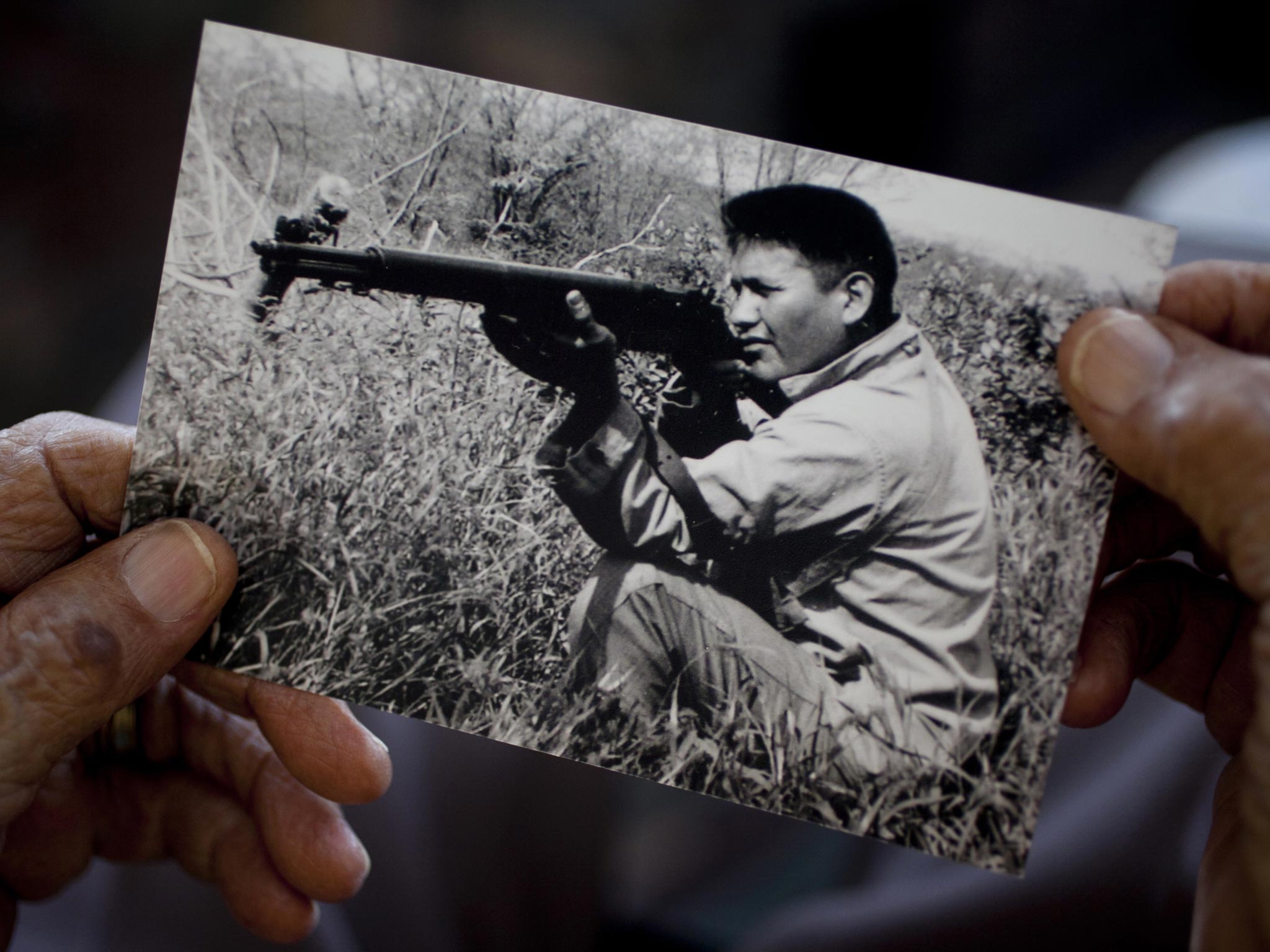Chester Nez: The last survivor of the 29 Navajo Indians who devised a code that helped win the war against the Japanese

Chester Nez was the last survivor of the original 29 Navajo Indians who developed the legendary code based on their language that saved countless American lives in the Pacific fighting against the Japanese in the Second World War, and provided a remarkable tale even by cryptography's exotic standards.
The project – one of the happier episodes in the troubled history of relations between the US government and native Americans – was born in the desperate days after Pearl Harbour when the Japanese were cracking every enemy code, and thus able to anticipate his every move.
Nez was born in remote western New Mexico, where he grew up herding sheep for his grandmother before attending a boarding high school in neighbouring Arizona. There he was contacted by military recruiters for the secret project that would take him on to the frontlines of the distant Pacific war.
At the time Navajos did not even have the right to vote in the two states, but that did not deter the Marine Corps from seeing their language as the possible basis for secure US communications in a critical theatre of the war. Some 250 Navajos applied for the programme, of whom 29, including Nez, were chosen to form the Marine's first all-native American unit, established in May 1942.
Using Navajo words for things like red soil, war chief, clan, braided hair, beads, ant and hummingbird, they produced a glossary of more than 200 military terms, using Navajo instead of English. The vocabulary included 'chay-da-gahi", Navajo for "turtle", that denoted a tank, and "gini" in English a hawk, that meant a dive bomber. America was referred to simply as "ne-he-mah", or "our mother".
Initially, Nez was worried the code wouldn't work, since even many Navajo speakers couldn't understand it. In the event, it proved utterly impenetrable. Not only did the language itself possess no written form; it was spoken only in the American south-west, and known by less than 30 non-Navajos.
The Marines gave Nez and his fellow recruits the title of "communications specialists" and taught them Morse code, semaphore and the "blinker" system of lights that sent messages between ships. The tradecraft, too, was perfect. The code itself was never committed to paper, and each message read aloud by a code-talker was instantly destroyed.
Soon hundreds of other Navajo-speakers later joined the project, while Nez and his colleagues quickly found themselves indispensable. Other Marines might be allowed home for spells of R&R, but the Navajos were simply transferred from one unit to another. Between 1942 and 1945 Nez served with the 1st, 2nd and 3rd Marine divisions and saw action in crucial engagements like Guadalcanal, Bougainville and Guam. The war over, Nez attended the University of Kansas, where he studied commercial art. He returned for service during the Korean war before spending two decades as a painter at the Veterans hospital in Albuquerque, where he retired in 1974.
When he first signed up, Nez could not tell his family what he was doing, and the entire Code Talkers project remained an official secret until 1968. Only then did the group become famous, culminating in the award of the Congressional Gold Medals – America's highest civilian honour – to Nez and the other survivors from the original 29 by President George W Bush in 2001. The following year came a Hollywood movie, Windtalkers, starring Nicolas Cage.
The small group became minor national celebrities, appearing on television and in parades, speaking of their exploits to students and at veterans' events. In 2011 Nez published a memoir, Code Talker: The First and Only Memoir by One of the Original Navajo Code Talkers of WWII, written with Judith Avila. In 2012 he belatedly received his degree from the University of Kansas, where some 60 years earlier he had abandoned his studies when tuition assistance for his military service stopped.
In his later years, Nez had parts of both legs amputated, confining him to a wheelchair. But that hardship seemed to trouble him no more than his trials in the Second World War. On one occasion during the fighting, he was wounded in the foot by shrapnel. But, he recounted, "the doc just wrapped it up and told me, 'You can still fight, Chief.'"
RUPERT CORNWELL
Chester Nez, Second World War veteran: born Chichiltah, New Mexico 23 January 1921; died Albuquerque, Mew Mexico 4 June 2014.
Subscribe to Independent Premium to bookmark this article
Want to bookmark your favourite articles and stories to read or reference later? Start your Independent Premium subscription today.

Join our commenting forum
Join thought-provoking conversations, follow other Independent readers and see their replies